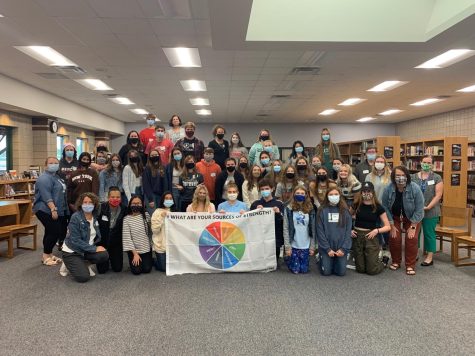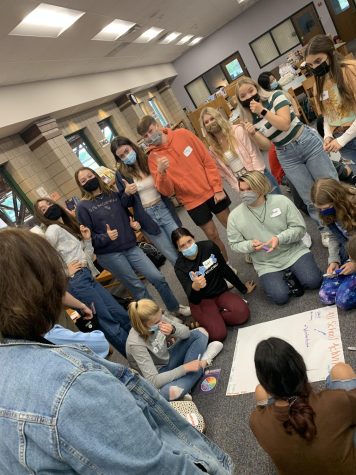Sources of Strength completes third annual training day
October 20, 2021
The student school group Sources of Strength met for a morning training session in the LMC on Monday, Oct. 4. The day was filled with different games, important conversations and mental health exercises. According to school counselor and Sources of Strength Adviser Ann Ragus, Sources of Strength is an evidence-based best practice youth suicide prevention program. It is designed to harness the power of peer social networks to change unhealthy norms and culture, ultimately preventing suicide, bullying and substance abuse. Sources of Strength leaders have been coming to BHS for three years for training days.
“The purpose of the training is to empower the students to build upon the leadership skills they currently demonstrate to design and participate in school-wide campaigns to send out positive peer to peer messages about hope, help and strength,” Ragus said.
Students from every grade level were nominated by teachers to participate in Sources of Strength. Junior Cindy Liu has been in the program for two years.
“(Sources of Strength is important) because you get to help more people,” Liu said.
There were roughly 60 participants in the training day, the majority of them being students but also including various staff leaders. Senior and two-year member Jalliana Ledesma says she hopes to see change come to BHS through Sources of Strength.
“I believe that sources of strength are truly important in many ways, starting with knowing that it helps students get help from mentors, trusted family or trusted adults. Also, making kids realize their voice does matter, and knowing that together we are stronger,” Ledesma said.
Sources of Strength leaders and members plan on starting school-wide campaigns this school year and for years to come. They want to encourage students to reach out and ask for help when they need it.
“The mission of Sources of Strength is to empower a well world and prevent suicide by increasing help-seeking behaviors and promoting connections between peers and caring adults,” Ragus said.









